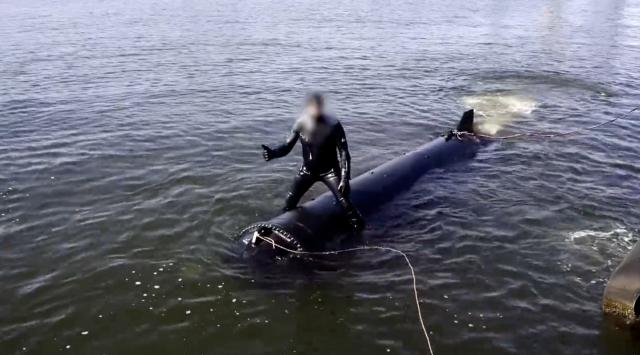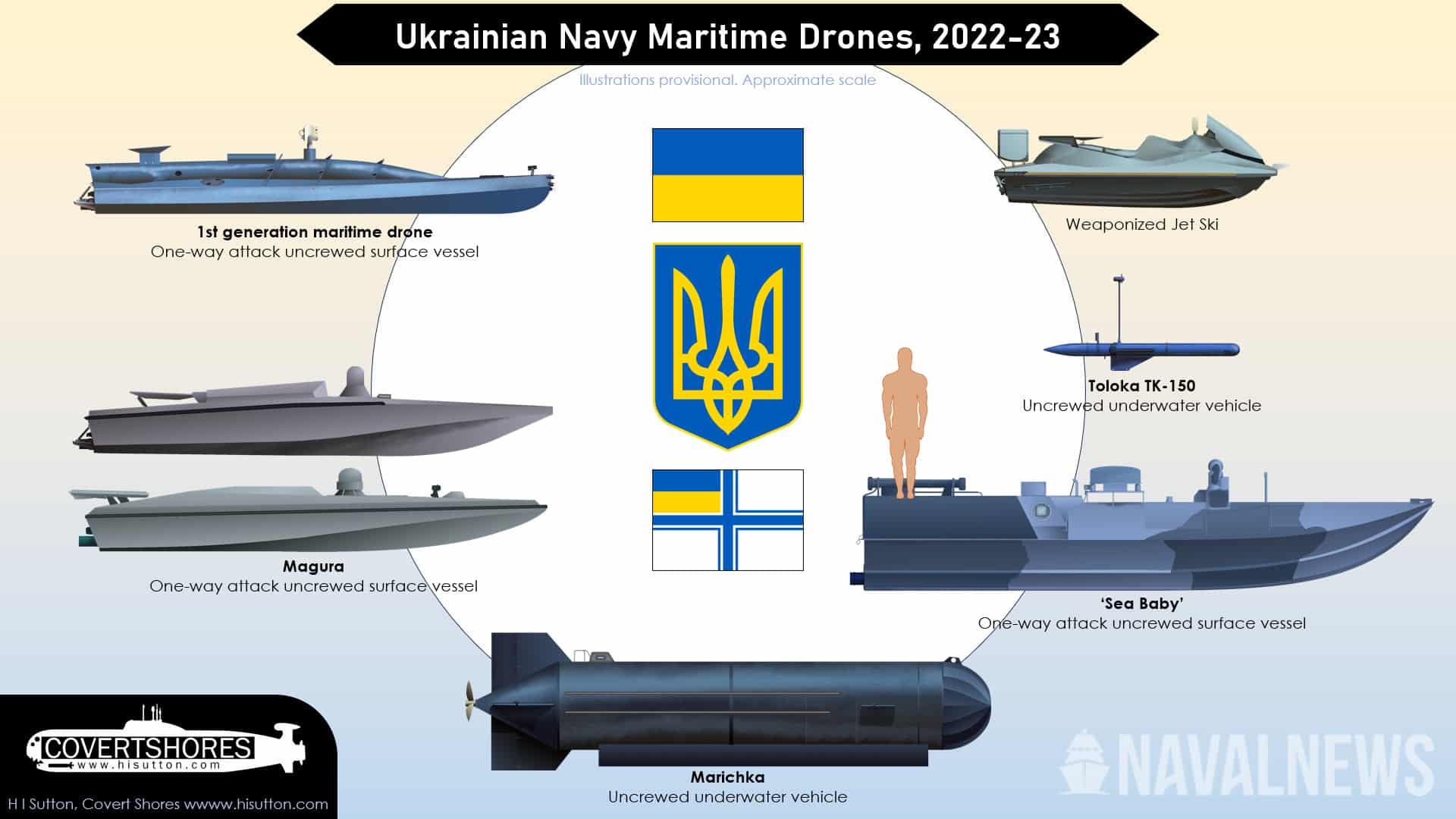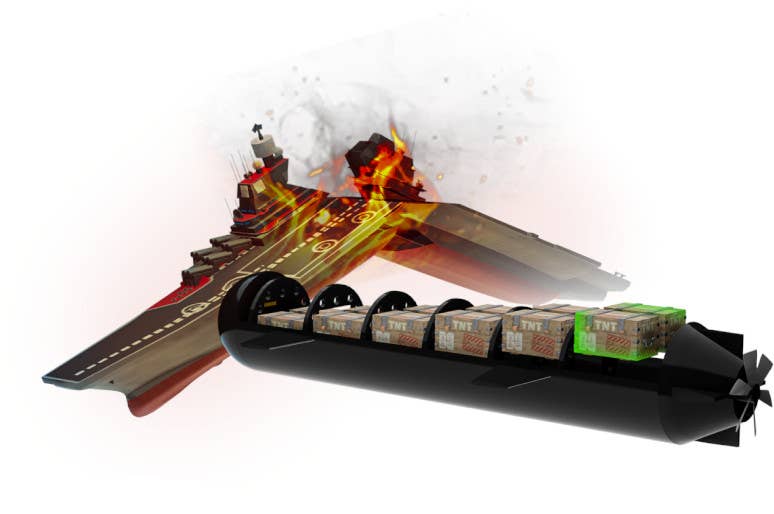Altogether, it very much remains to be seen what will come of Marichka and whether it will even become operational. At the same time, it is clearly designed to offer a less vulnerable kamikaze attack platform and potentially perform other missions that are fully in line with how Ukraine is waging war against Russia in and around the Black Sea
Our Best Look At Ukraine’s ‘Marichka’ Submarine Drone
Marichka is envisioned as being able to attack naval targets over great distance and even run clandestine resupply missions.
A new video shows a prototype of a large Ukrainian drone submarine moving under its own power just under the surface of the water. Much about the design, dubbed Marichka, remains murky, but the organization behind it says it could be used to launch kamikaze attacks against ships and maritime infrastructure. This is a kind of capability that Ukraine has a clear interest in and uncrewed surface vessels have already become a key Ukrainian weapon for striking at the Russian Navy and other targets in and around the Black Sea.
AMMO Ukraine, which describes itself as a charitable foundation, posted the new video of Marichka – Ukrainian for Mary – on its social media accounts earlier today. The group has been promoting the uncrewed underwater vehicle (UUV), and soliciting investments and donations to support its development, since August. This followed a separate group, called Brave-1, unveiling a planned family of smaller kamikaze UUVs, known as Toloka, earlier in the year.
The video, seen in the social media post below, shows Marichka being lowered into the water and detached from a six-wheeled trailer used to move it on land. Personnel with their faces blurred out are then seen climbing on top of the drone submarine, which then begins moving via its own propulsion system. Additional individuals are also seen in a rubber raft behind it.
Exactly how Marichka, which is reportedly just under 20 feet (six meters) long and just over three feet (one meter) in diameter, is powered is unclear. There are no clear indications that its propulsion system is air-breathing, which could point to strictly battery power.
The UUV otherwise has a tubular shape with four fins arrayed around the tail end. There are a pair of horizontal stabilizers at the front, as well. The new footage of the UUV and previous clips showing it being tested, the latter of which can be seen in the full video below, have the tail end blurred out.
Computer-generated renderings from AMMO Ukraine have depicted Marichka with a six-bladed propeller, as well as two additional stabilizers toward the stern.
AMMO Ukraine has claimed in the past that Marichka has a maximum range of 621 miles (1,000 kilometers). If true, the drone submarine could one-way trips to virtually any point in the Black Sea from ports in western Ukraine. Suitable motherships at sea could be used to launch the UUV closer to its destination or from more unexpected vectors.
The unit cost is expected to be approximately 16 million Ukrainian hryvnia, or just under $433,421 at the rate of exchange at the time of writing, according to AMMO Ukraine.
- For a year now, Ukrainian forces have been making increasingly good use of an expanding arsenal of drone boats to launch attacks on Russian Navy ships at sea and in port, as well as other targets like the Kerch Strait Bridge.
Similar kinds of guidance and targeting capabilities might be a challenge for Marichka. Although some sort of mast with cameras and datalink aerials could be possible, it's unclear if it would work in practice, especially in choppier seas. Still, it's a possibility.
Where a concept like this would be better employed is autonomously against fixed targets like bridges and ships in port. The guidance method to achieve this application just requires a specific set of location coordinates and the ability to sail there and execute a pre-specified attack run, all run on autopilot. While the targets the drone could attack would be far more limited, it would also be harder to counter than its surface-riding counterparts.
A UUV, even one that is only capable of operating just under the waves, would have the added benefit of being less detectable than even low-profile USVs running on the surface. On multiple occasions, Russian authorities have released imagery they say shows its forces engaging incoming Ukrainian USVs.
Depending on its exact capabilities, a kamikaze drone boat might be able to navigate under certain physical defenses that could impede USVs, including floating booms, obstacles, and other barriers that Russian forces have deployed in Sevastopol Bay on the occupied Crimean Peninsula. Sevastopol is currently home to the headquarters of the Russian Navy's Black Sea Fleet and many of its ships, which Ukrainian forces have notably stepped up strikes on in recent weeks.
Operational Ukrainian drone submarines, even if they are relatively noisy at high speed and more readily detectable as a result, would force Russia to put additional resources into its undersea defenses. The Russians have already deployed specially trained dolphins and rare coastal defense variants of the BM-21 multiple rocket launcher, among other capabilities, around Sevastopol to help protect against combat divers and other underwater threats.
Beyond this, Marichka could be useful as a more difficult-to-detect maritime intelligence-gathering platform. Submarines, crewed and uncrewed, inherently have benefits as intelligence, surveillance, and reconnaissance assets given their ability to slink around under the waves. Ukraine's Navy does not currently have any crewed submarines in its inventory.
AMMO Ukraine has also raised the possibility that Marichka could be used as a discreet, small transport able to carry critical supplies to forward military units or even civilians in coastal areas. Marichka as a transport might be useful for supporting Ukrainian special operations units conducting raids and other behind-the-lines operations in places like Crimea. Still, this seems more likely to be a limited secondary application of such a design.
Altogether, it very much remains to be seen what will come of Marichka and whether it will even become operational. At the same time, it is clearly designed to offer a less vulnerable kamikaze attack platform and potentially perform other missions that are fully in line with how Ukraine is waging war against Russia in and around the Black Sea now.






No comments:
Post a Comment